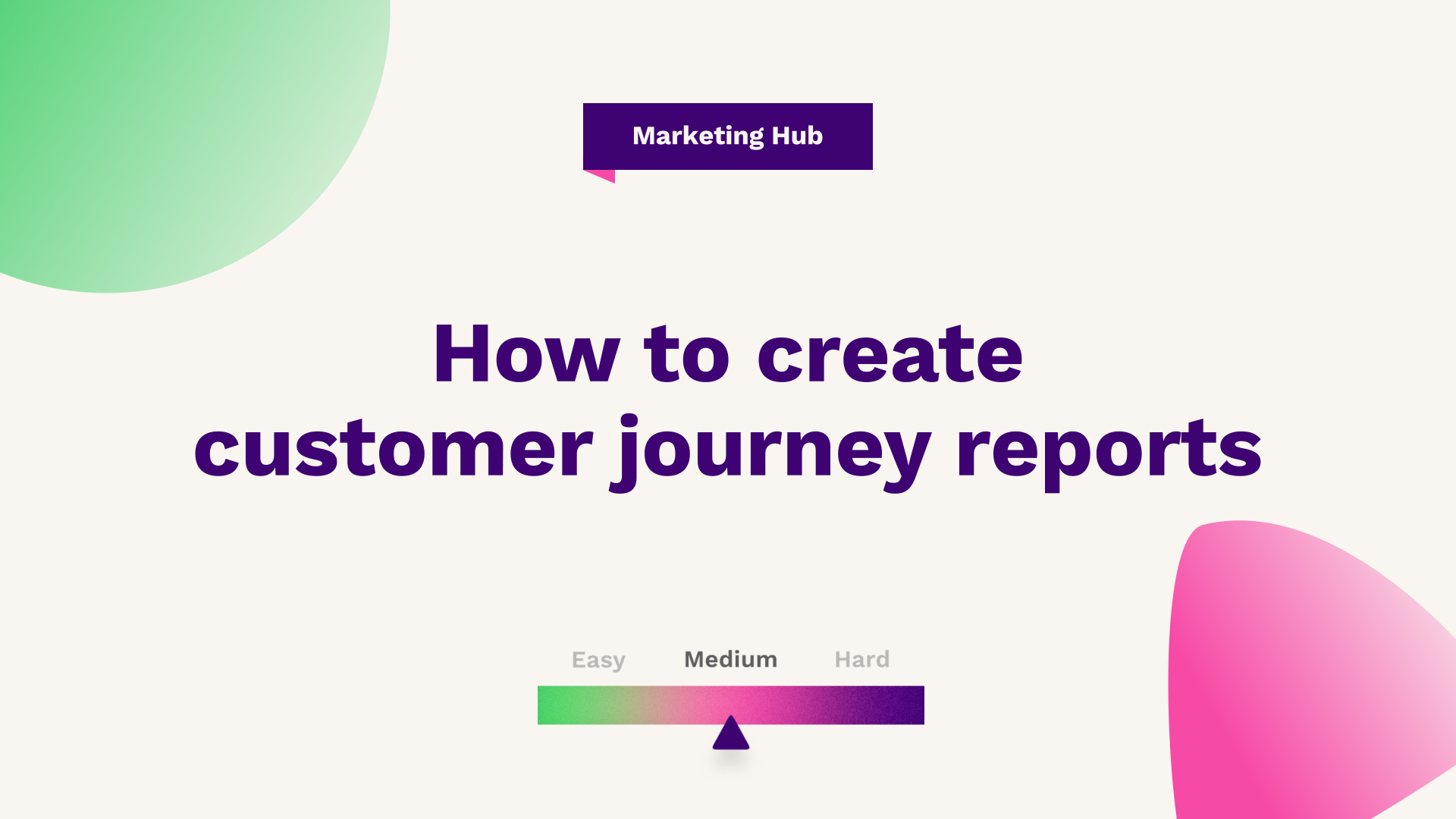
Sam Banks, our Technical Digital Strategist at Fuelius, explains how to create customer journey reports, watch the video or follow the guide below...
Hub: Marketing
Difficulty: Medium
Tier: Enterprise
Within this article, we will be going through the newly released customer journey analytics. This was a super cool update that came out in inbound 2022, and essentially what this allows you to do is take the visualisations of Google Analytics and mix that with the simplicity of the HubSpot report builder.
What this will allow you to do is create visualisations on your overall marketing journey and how context flows through that actual journey and where your volume is, but more importantly, where your drop-offs are as well. Being able to really look at your journey from a high level and looking at where you can optimise and improve because again, HubSpot gives you that platform of all those tools, with those native functions. But, being able to see where the quick wins are and where you can really optimise is where the value of the platform lies. Let's get into it.

Create a report
Where you want to be heading is in HubSpot, under reports. You can see each time you go into analytics tools, it's prompting you that Customer Journey reports have just launched. This won't be here forever, so if you go to reports and then reports once more, it will take you to the overall reporting library. From here, if you go to create a report, you will see that Customer Journey reports are now actioned on the screen.
If you select that, what you'll actually see is you can now start to build journey analytics based on the visualisations you want to build. So, down the left-hand side, there are certain touch points which you may want to actually build onto your visualisation. You could do it on life cycle stages and it will start to show how life cycle stages interact with more soft elements of the marketing journey. Or, you could just create a general funnel, such as page views to form submissions. Scroll down to where it says web pages, and drag page visitors as your first touchpoint on our journey analytics.
Conversion elements
Then, you will start to build in conversion elements, for example, looking at how many people viewed a form and then how many people submitted a form. Then what you want to do following that is looking at under life cycle stages, how many marketing-qualified leads came from that? So, as you can see, you can do a maximum of seven as of right now at the time of the above recording, and you can then select the visualisation, as well as the date range.
As of October 2022, you can only do the last 30 days of data that may be subject to change in the future. But, if you do the past 30 days, that will give a holistic overview and what you can then do is press run report. As you can see, HubSpot then starts to build your report on the right-hand side where you can see its refreshing information.
It may take a minute or so, just as it collects the data. As you can see, it's now building a contact funnel of the last 30 days of the different touch points you have built in your journey. So you can see if you hover over it, in the video example 66 contacts, visited pages in the last 30 days.
Of those 66, only 42 looked at a form. So, that's 42 individuals, not 42 form views. Don't get that mixed up. And then only 33 of those contacts went on to do a form submission. Then what you can do is look at how many of those contacts were either marketing-qualified leads, or became marketing-qualified leads.
The journey
What you're quickly doing is seeing a bit of a waterfall and how that transcends down the journey. So, you can see overall the total conversion of that path is 33.33%, whereas, the average time to conversion is 31.5 hours. So, you will know that when you are trying to push people down the journey, it takes an average of 30 hours between the stages for someone to do that, for the entirety of the journey.
What you can look at, if you are looking to do this and you have a lead time or a deadline that you are working towards, you have to allow for 30 hours for someone to go from step one through the funnel of what you have just built. If you scroll down, you can see a table element. So, you can see that you've got the next step conversion, how many conversions happen there? So again, it's building on the fundamentals of funnel reporting that HubFuel had out of the box as well.
Exporting data
You can export this data, which will allow you to export all this to a table or an Excel or CSV manner. What you should do is call this customer journey, pages visited forms, to MQLs. You can then save that report, like a normal report and add it to an existing dashboard.
Alternatively, what you can do is whenever you've built your touchpoints, you can add filters. You could say that it's only on a particular page, so only certain URLs you want to track on this. Maybe on forms, it's certain forms or maybe on the marketing qualified leads, you just want to track marketing qualified leads.
The really cool thing about this is funnel reporting up to now has been quite formulaic in how it's laid out, so it's standardised. You can actually use this in tandem with custom behavioural events, which Fuelius has done a video on. But essentially you can create custom events, like custom goals in Google Analytics and track micro goals within your journey, not just hard conversion points as well.
Saving your customer journey
So, from there you would just press save, add to the dashboard, select your dashboard, and then from there you would save it. That's how to build a customer journey in HubSpot. Again, super easy to do. You have completed it there in six minutes and it's given us some really insightful data. Everything as standard is interactive, so once it's on the dashboard, you'll be able to click in and see the contacts, and also export that data going forward.
Are you now ready to jump in? It is in beta at the moment, so see what you can do with it. Check out all of that granular data you probably didn't have access to beforehand and let's see what you can build with Journey Analytics in HubSpot.
If you're looking for further HubSpot support, our team would ❤️ to help you out! Book a call with us today or head over to our video hub for more HubSpot tips.




